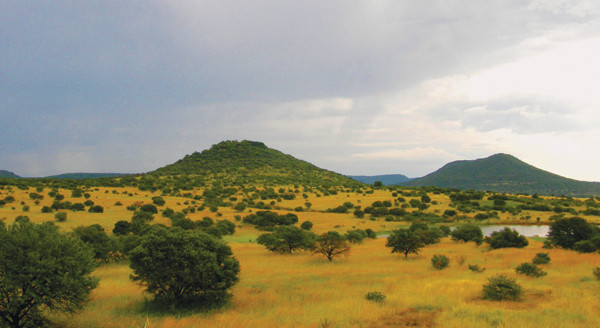
by Timothy Oleson Tuesday, September 2, 2014

A study of genetic data and the shapes of skull bones among indigenous populations from Asia, Australia and Melanesia suggests modern humans left Africa in multiple waves separated by tens of thousands of years. Credit: ©Gossipguy, CC BY-SA 3.0.
There is widespread agreement among scientists based on fossil and geochemical evidence that modern humans evolved in Africa between 200,000 and 100,000 years ago before spreading around the world. But the timing and route of this dispersal, and whether it occurred as a single exodus or in multiple pulses, remain contested. Now, a new study throws its weight behind a multiple-dispersal hypothesis, suggesting a first group of modern humans left Africa as early as 130,000 years ago, followed by a second about 80,000 years later.
A team led by Hugo Reyes-Centeno of Eberhard Karls University of Tübingen in Germany studied differences in genetic data and the shapes of skull bones among populations of 10 modern indigenous Asian, Australian and Melanesian ethnicities. They compared the resulting patterns of similarities and differences among the populations in each biological dataset to predictions of when different parts of Eurasia and Oceania would have been settled based on several prevailing out-of-Africa dispersion models, looking to see which model the data fit with best.
In Proceedings of the National Academy of Sciences, they reported that their tests with both datasets showed “unambiguous support for a multiple-dispersals model” in which a first group may have left Africa as early as the late Middle Pleistocene about 130,000 years ago, probably following a coastal route across southern Asia. This group was then likely followed by a second wave of humans who left Africa about 50,000 years ago on a more northerly route, going on to populate the remainder of Eurasia.
Over time, descendants of this second group may have interbred with or taken over territory from descendants of the first along some western portions of the southern route, the researchers suggested, thus obscuring genetic evidence for the earlier migration in certain modern populations. Meanwhile, populations farther east, such as in Australia, Papua New Guinea and Melanesia (comprising the Solomon Islands, Vanuatu and other nearby islands), appear to have remained relatively isolated, “retaining the signal of a southern route dispersal,” they wrote.
Many gaps remain in the story of humans spreading beyond Africa — with archaeological, paleontological and climatological information lacking in many areas — but Reyes-Centeno and his colleagues suggested that the model they describe fits with the data available so far. “Continued fieldwork, alongside rapid advances in modern and ancient genome sequencing, will allow for greater resolution in modeling the spatial and temporal dimensions of modern human origins and dispersals,” they wrote.
© 2008-2021. All rights reserved. Any copying, redistribution or retransmission of any of the contents of this service without the expressed written permission of the American Geosciences Institute is expressly prohibited. Click here for all copyright requests.